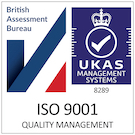
Posted: 14th July 2025
In today’s digital-first world, businesses face ever-increasing threats to their IT infrastructure, from cyberattacks and data breaches to hardware failures and natural disasters. Without a robust IT Recovery Plan, even a minor disruption can lead to costly downtime, data loss, and reputational damage.
What is an IT Recovery Plan?
An IT Recovery Plan should be part of your broader business continuity plan. It outlines how your business will respond to and recover from IT-related disruptions, including processes, responsibilities, and technologies needed to restore critical systems and data quickly.
Why every business needs an IT Recovery Plan
Many businesses believe that IT disasters only impact large corporations. However, the UK Government Cyber Security Breaches Survey 2024 revealed that 50% of UK SMEs experienced some form of data breach or cyber attack in the past year. The consequences can be severe, especially if your business lacks the planning and resources to recover swiftly.
Benefits of having an IT Recovery Plan
Having a tried-and-tested IT Recovery Plan will gift you an overall faster recovery from IT incidents, reducing costly downtime and operational disruption. It will also help minimise the severity of data loss, helping to protect your reputation and maintain the trust of your customers.
60% of SMEs will never recover from a cyber attack without a robust IT Recovery Plan due to financial loss and reputational damage
Key components of an effective IT Recovery Plan
Creating an IT Recovery Plan doesn’t have to be overwhelming. You can break it down into manageable sections:
1. Risk assessment and business impact analysis
- Start by identifying the most likely risks to your IT systems:
- Cyberattacks such as malware and ransomware
- Server or hardware failures
- Human error
- Power outages, floods, or fires
Then, assess how each risk could impact your business. Consider the systems that are critical for day-to-day operations and ask what would happen if they were down for 24 hours.
2. Inventory of IT assets
List all critical assets, including:
- Servers and network equipment
- Workstations and mobile devices
- Cloud services including Microsoft 365, Google Workspace
- Software applications and licenses
- Data storage locations
Keep this inventory updated to ensure your IT Recovery Plan stays relevant.
3. Define Recovery Time and Recovery Point Objectives
There are 2 key metrics to include here:
Recovery Time Objective (RTO): How quickly must your systems be restored after a disruption?
Recovery Point Objective (RPO): How much data loss (in time) is acceptable? For instance, are hourly backups enough?
These metrics help guide your backup and recovery strategy.
4. Backup and data recovery strategy
You must have reliable, tested backups. Best practices include:
- Daily automated backups (or more frequent for critical data)
- Off-site or cloud backups to protect against physical damage
- Encryption and secure access controls
- Regular testing to ensure backups can be restored in a timely manner
Consider solutions like Microsoft Azure Backup or cloud backups for assured GDPR compliance.
5. Roles and responsibilities
Clearly define who does what during a disaster. Assign responsibilities for:
- Declaring the incident
- Communicating with staff and customers
- Restoring specific systems
- Liaising with your IT support provider
Include contact details for those involved, including cover arrangements in the case of absence.
6. Communication
In the event of an IT failure, clear communication is essential. Your plan should include:
- Internal communications to staff
- Customer notifications (if applicable)
- Templates for email and social media updates
- PR or media contact strategy (if applicable)
7. Test and review your plan thoroughly
An untested IT Recovery Plan is almost as bad as having no plan at all. Test your recovery processes at least once a year, and after any major changes to your infrastructure.
From each test, compile a review of what works well, what you could look to improve, and what failed, and update your plan accordingly.
We don’t just support your IT, we support your business
No business is immune to IT disruptions, but having an effective IT Recovery Plan can make all the difference in the impact on your business. By investing time now, you’ll reduce stress, downtime, and long-term costs when the unexpected happens.
If you don’t know where to start, we’re on hand to help! Just get in touch.








